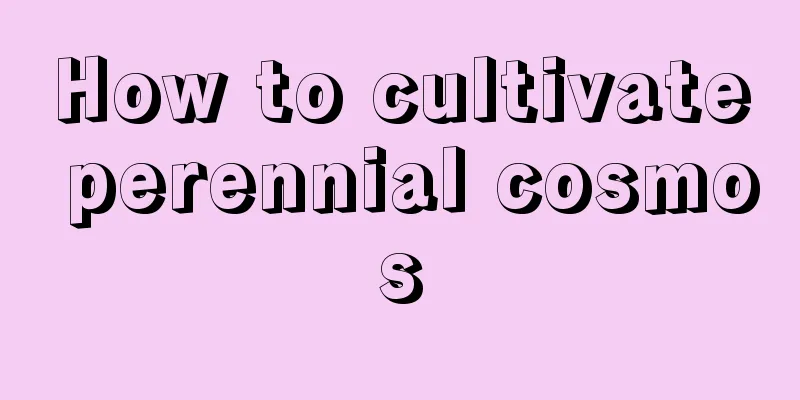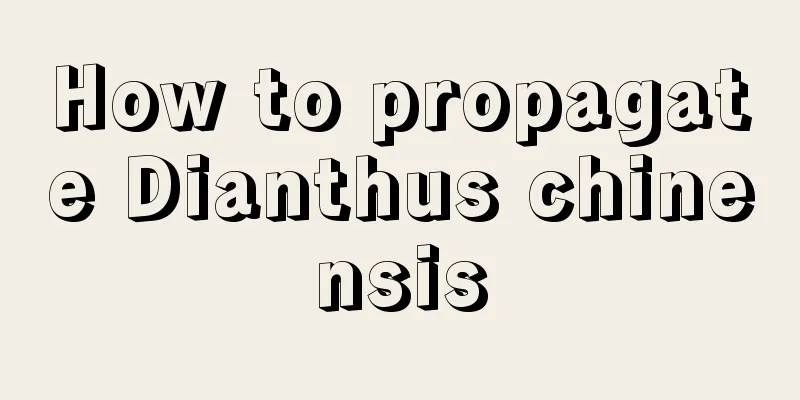How to cultivate perennial cosmos

1. Soil requirementsIt is easier to cultivate perennial cosmos than other Asteraceae plants because it has little demand on the soil. It can be grown in soil with suitable light, temperature and large gaps. 2. Cultivation process1. Phase 1Sowing is the first stage of ground planting, which is to spread the seeds into the soil and wait until they sprout. Because seeds need sunlight to germinate, there is no need to use things like sunshades at this stage. In addition, the soil needs to maintain a certain amount of moisture, that is, not too much moisture or too little moisture, which is conducive to seed germination. 2. Second stageThe second stage of ground planting is from germination to the growth of real leaves. At this time, the ground planting temperature should be lowered appropriately, preferably maintained at around 18 to 20 degrees. At the same time, the soil moisture should also decrease during this stage, but it should not be too dry. p> 3. The third stageThe third stage of cultivation begins when the true leaves begin to grow normally and more and more true leaves appear. At this stage, the humidity of the air needs to be slowly reduced. Intervals between two waterings can allow the soil to change from moist to dry, which is good for the growth of its roots. 4. The fourth stageThe roots of perennial agave are basically stable and well developed, and can be transplanted into the fourth stage of ground planting. The air and soil requirements at this time are roughly the same as in the previous stage. 3. FertilizationPerennial cosmos does not like fertilizer, so you can apply a thin layer of fertilizer about 12 days after potting it, and then apply fertilizer once about one and a half months later. And add a room-resistant fertilizer to the soil as additional fertilizer before moving it outdoors. The purpose of irrigation is to apply a fertilizer that can prevent the fertilizer from being diluted, which should be applied about twice in total. During the flowering period, additional fertilizer should be applied to prevent the loss of substances such as magnesium and iron. |
<<: How to trim a Lonza gemstone
>>: How to grow daisies in winter
Recommend
Euphorbia gejin sowing method
1. Is sowing feasible? Euphorbia gejin is a varia...
Is it good to water flowers with red wine? The correct way to water flowers with expired red wine
Is red wine good for watering flowers? It is bene...
How to water the bean tree? The correct way to water
Overview of Watering Bean Trees When watering gre...
The difference between celandine and rehmannia
1. Difference in appearance Greater celandine is ...
How to make purple bamboo bonsai? This is super artistic!
Selecting materials This is the first and crucial...
Can Guanyin bamboo be planted in the soil?
Can Guanyin bamboo be planted in the soil? Guanyi...
These flowers need to be watered frequently in summer, otherwise they will die.
Gardenia Gardenia likes a humid environment. The ...
How to grow Onslow succulents
1. Breeding environment 1. Pot soil: To grow Onsl...
Can I grow camellia at home?
Can I grow camellia at home? Camellias can be pla...
How to propagate Bolu by division, cuttings, and leaf cuttings
Wave breeding method Common ways of propagating B...
Does the lucky tree bloom? Introduction to cultivation methods
1. Does the lucky tree bloom? The lucky tree is b...
Maintenance and management methods of osmanthus
Basin Potting is usually done in spring or autumn...
How to disinfect soil with rotten roots
1. Sun exposure disinfection Although the soil wi...
How to grow geranium in winter
1. Move indoors in time The temperature in the no...
Is wintersweet suitable for indoor cultivation?
1. Is it suitable? Wintersweet is suitable for in...









